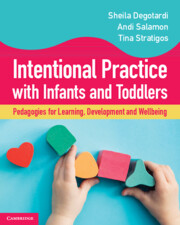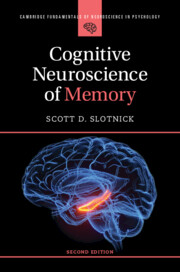Refine search
Actions for selected content:
37588 results in Cambridge Textbooks
3 - The Formalism of Quantum Mechanics
-
- Book:
- Quantum Mechanics
- Published online:
- 27 June 2025
- Print publication:
- 19 June 2025, pp 72-124
-
- Chapter
- Export citation
Copyright page
-
- Book:
- Electromagnetism
- Published online:
- 26 June 2025
- Print publication:
- 19 June 2025, pp iv-iv
-
- Chapter
- Export citation
Dedication
-
- Book:
- Quantum Mechanics
- Published online:
- 27 June 2025
- Print publication:
- 19 June 2025, pp v-vi
-
- Chapter
- Export citation
4 - Systems of Particles
-
- Book:
- Classical Mechanics
- Published online:
- 26 June 2025
- Print publication:
- 19 June 2025, pp 76-94
-
- Chapter
- Export citation
1 - Newtonian Mechanics
-
- Book:
- Classical Mechanics
- Published online:
- 26 June 2025
- Print publication:
- 19 June 2025, pp 6-15
-
- Chapter
- Export citation
Contents
-
- Book:
- Quantum Mechanics
- Published online:
- 27 June 2025
- Print publication:
- 19 June 2025, pp vii-xiv
-
- Chapter
- Export citation
8 - Identical Particles
-
- Book:
- Quantum Mechanics
- Published online:
- 27 June 2025
- Print publication:
- 19 June 2025, pp 265-277
-
- Chapter
- Export citation
Appendices: - Vector Calculus
-
- Book:
- Electromagnetism
- Published online:
- 26 June 2025
- Print publication:
- 19 June 2025, pp 337-338
-
- Chapter
- Export citation
4 - Electrodynamics
-
- Book:
- Electromagnetism
- Published online:
- 26 June 2025
- Print publication:
- 19 June 2025, pp 107-141
-
- Chapter
- Export citation
8 - Electromagnetism in Matter
-
- Book:
- Electromagnetism
- Published online:
- 26 June 2025
- Print publication:
- 19 June 2025, pp 273-336
-
- Chapter
- Export citation
16 - Quantum Foundations
-
- Book:
- Quantum Mechanics
- Published online:
- 27 June 2025
- Print publication:
- 19 June 2025, pp 562-619
-
- Chapter
- Export citation

Intentional Practice with Infants and Toddlers
- Pedagogies for Learning, Development and Wellbeing
-
- Published online:
- 17 June 2025
- Print publication:
- 12 June 2025
-
- Textbook
- Export citation

Introduction to Education
- Knowledge, Practice, Engagement
-
- Published online:
- 14 June 2025
- Print publication:
- 02 June 2025
-
- Textbook
- Export citation

Cognitive Neuroscience of Memory
-
- Published online:
- 12 June 2025
- Print publication:
- 30 January 2025
-
- Textbook
- Export citation

Aerodynamics for Engineers
-
- Published online:
- 12 June 2025
- Print publication:
- 12 June 2025
-
- Textbook
- Export citation
One-Minute Methods
-
- Book:
- Child Development
- Published online:
- 19 June 2025
- Print publication:
- 12 June 2025, pp 266-273
-
- Chapter
- Export citation
11 - Assessing, planning for and communicating learning
-
- Book:
- Intentional Practice with Infants and Toddlers
- Published online:
- 17 June 2025
- Print publication:
- 12 June 2025, pp 282-308
-
- Chapter
- Export citation
2 - Why Does Love Matter?
- from Section I - The Early Years
-
- Book:
- Child Development
- Published online:
- 19 June 2025
- Print publication:
- 12 June 2025, pp 19-35
-
- Chapter
- Export citation
9 - Social cultures and belonging
-
- Book:
- Intentional Practice with Infants and Toddlers
- Published online:
- 17 June 2025
- Print publication:
- 12 June 2025, pp 227-254
-
- Chapter
- Export citation
Appendix D - Internationalized Intrastate Armed Conflicts Where Side A Received Secondary Warring Support, 1989–2023
- from Appendices
-
- Book:
- Civil War and Intrastate Armed Conflict
- Published online:
- 29 May 2025
- Print publication:
- 12 June 2025, pp 439-440
-
- Chapter
- Export citation
